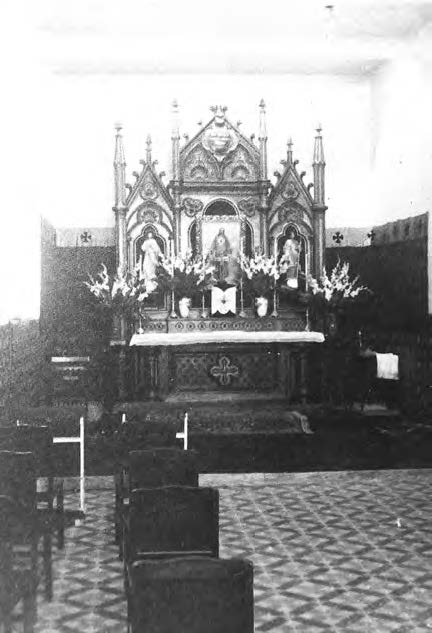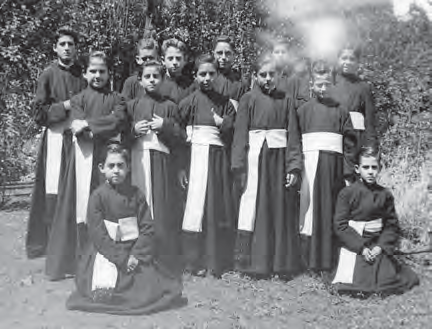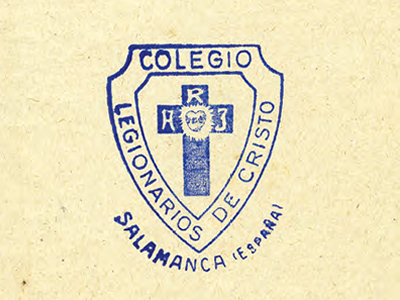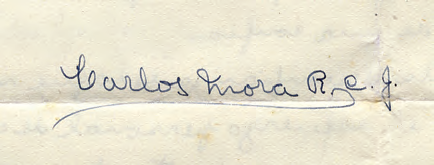Over the years, the Congregation has developed a highly interconnected symbolic system, which includes the name, motto, shield, hymn, and flag. These symbols reflect its purpose and charism. Since its foundation, the Apostolic Missionary was dedicated to the Sacred Heart of Jesus.
Between 1945 and 1946, the name of the new religious institute was chosen: Missionarii a Sacratissimo Corde Jesu et beatissima Virgine Perdolente (Missionaries of the Sacred Heart of Jesus and the Virgin of Sorrows). This name appears in the documents of the Nihil Obstat and the canonical erection of 1948. However, around the late 1940s, the religious of the young Congregation began to define themselves as Legionaries, embracing a suggestion from Pope Pius XII, with which they felt identified. Initially, they called themselves “Legionaries of the Pope,” but later definitively opted for “Legionaries of Christ.” Soon, this new name prevailed over the original one.
In fact, when in 1952 a name was sought for the newly founded college of the Congregation in Rome, it was chosen to be Collegium Maximum Legionariorum Christi (The Great College of the Legionaries of Christ). Remnants of these changes can be seen in the acronyms often placed at the end of the names of religious institutes: until around 1949, the acronym CJ was commonly used, meaning “Cordijesuita” (Jesuit Heart); around 1950 and 1951, the acronym LP was used, which meant “Legionaries of the Pope”; and finally, from 1952 until today, the acronym LC has been used, meaning “Legionaries of Christ.”
The Church took note of the name change and gradually ratified it: in 1952, the Congregation of Religious and the Vicariate of Rome set the building known as the “Major College of the Legionaries of Christ in Rome” as the General Curia. The Decretum Laudis, received in 1965, still used the first name but specified that the new institute was commonly known by the name “Legionaries of Christ.” Later, Cardinal Ildebrando Antoniutti decreed the definitive change in 1969: the old name was no longer used, and the name “Legionaries of Christ” remained. In a general audience on January 2, 1974, Blessed Pope Paul VI addressed the new priests of the Congregation.
On that occasion, he summarized the charism behind the name “Legionaries of Christ” as follows:
“What does ‘Legionaries of Christ’ mean? Legionaries of Christ means that you belong to a spiritual and religious family that is not very old and was founded with our knowledge. We remember the first steps… You are legionaries, meaning not inert people or those who are only watching how things go, but those who want to imprint on things a force and give Christianity an expression that is its own: militancy; Legionaries, meaning combative in the name of Jesus. May God bless you and always keep this characteristic trait in you. It is certainly not a small thing; the word is magnificent, but it is rightly referred to Christ. To be conquerors, legionaries to fight and defend, legionaries to conquer and call other brothers to the same faith and the same communion in the Lord.”













